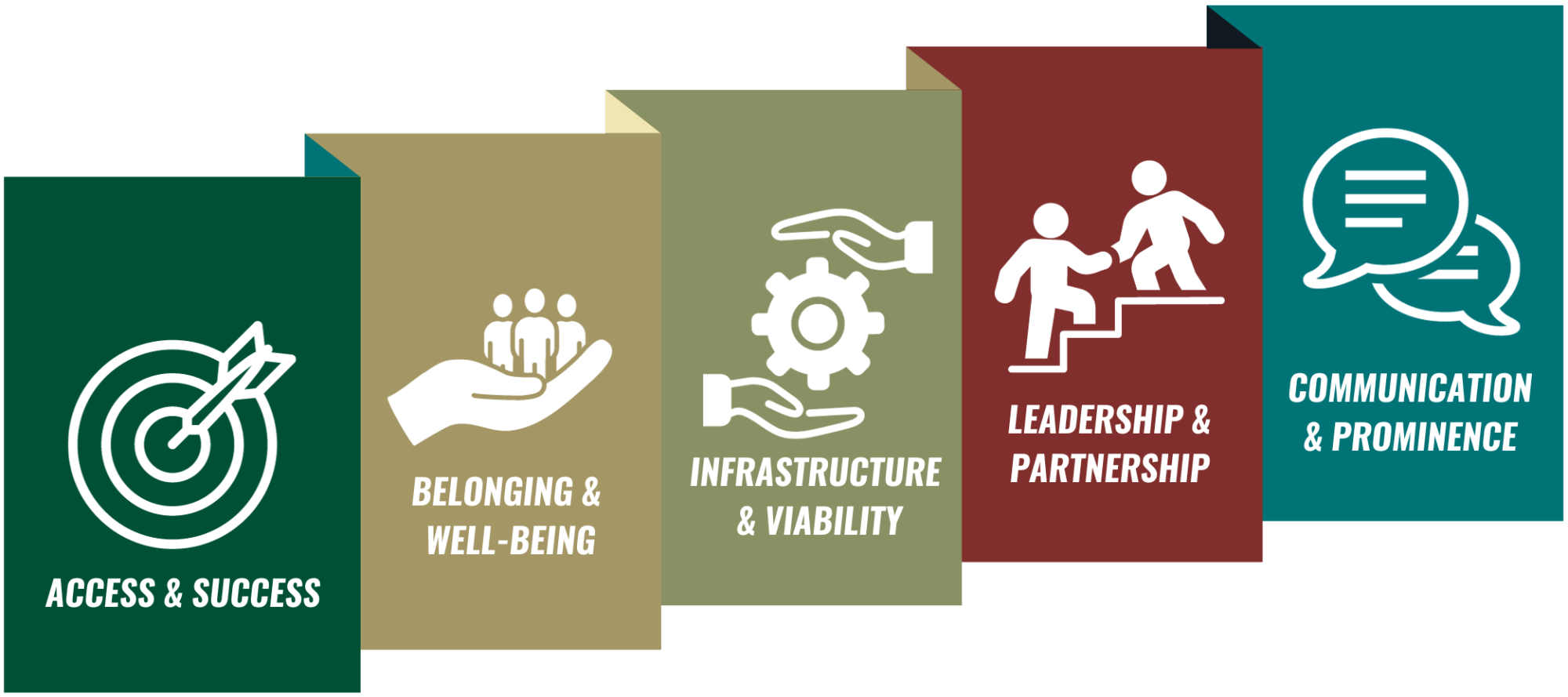Inclusive Excellence is a framework designed to integrate diversity, equity, and educational quality efforts into institutional missions and institutional operations as a shared responsibility among all members. It is an active ongoing process of continuous improvement through inquiry, action, accountability, and assessment as a driving force for organizing efforts to build and sustain a climate and culture that invites and leverages diversity to guide innovation in teaching, research, discovery, service, partnership, and accountability within and beyond the institution’s borders.
UNC CHARLOTTE INCLUSIVE EXCELLENCE MODEL
UNC Charlotte’s Inclusive Excellence Model presents a customized approach for integrating the University’s collective diversity, equity and inclusion efforts throughout the tapestry of our institution. This campus-wide strategy reflects the comprehensive and flexible structure needed to foster intentional efforts and continuous improvement across all areas of the University’s functioning. Below is a representation and explanation of each model dimension. For more information on how this model is operationalized throughout our university, visit our Building On Common Ground: Inclusive Excellence Strategic Plan, 2023-2033 page.

INCLUSIVE EXCELLENCE MODEL DIMENSIONS
All framework dimensions are designed to facilitate systemic self-study across all of UNC Charlotte's functioning areas. The guided questions below facilitate self-inquiry on your area's strengths and weaknesses. Click on each framework dimension below to expand and learn.
- How do we invite people to join us (recruitment)?
- Who gets to be here (admissions/hiring)?
- How do we provide support (advising/career ladders)?
- Who benefits, who is excluded, and how (graduation/career outcomes)?
- How have we updated our practices to reflect current and future needs?
- How accessible are our facilities, language, and policy understandings?
- What is it like here and how do we know?
- How do we relate to one another?
- Who is thriving and why?
- What data do we identify and use to prioritize areas of growth and improvement?
- What are our institutional best practices to ensure all feel welcomed, valued, and respected?
- How are our institutional best practices evaluated and by whom?
- Who are we including or excluding in our planning?
- How are we organized and what do we prioritize?
- Where do we invest our energies and money?
- What "governs" our work?
- How do we know if our intent matches our impact?
- How do we build and maintain inclusive capacity?
- What actions have to we taken or should pursue to support DEI?
- How do we access and monitor our progress, intent, and impact in a way that is standardized?
- What impact do we have on this place and surrounding areas?
- How does the community contribute to our success and knowledge?
- What does it mean to be a good neighbor?
- Are we intentional in addressing historically underserved and minoritized communities?
- How are we building partnerships to create solutions for community-based DEI challenges?
- How do we measure, monitor, and set ethical expectations for outreach, engagement and collaboration with underserved and minoritized communities?
- How do we communicate what’s important to us?
- Are our efforts translatable across multiple audiences?
- What are our shared expectations?
- How do we amplify and normalize our messaging as a daily practice?
- Is our messaging consistent across the institution?
- Is our messaging accessible?
- How inclusive is our language among intended audience(s)?